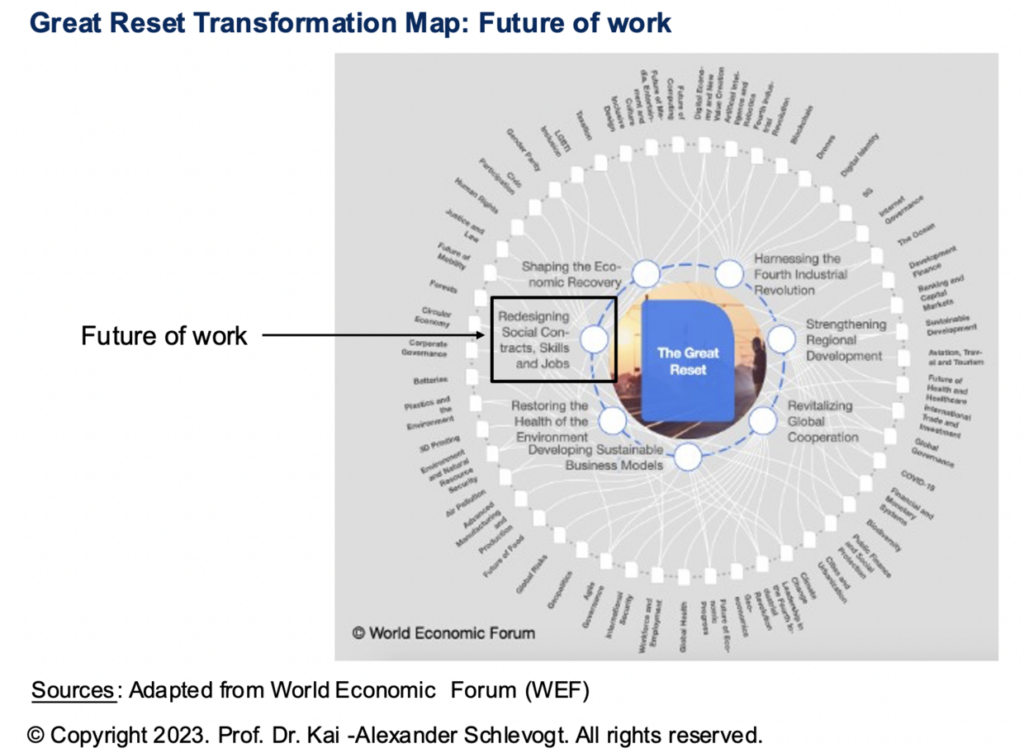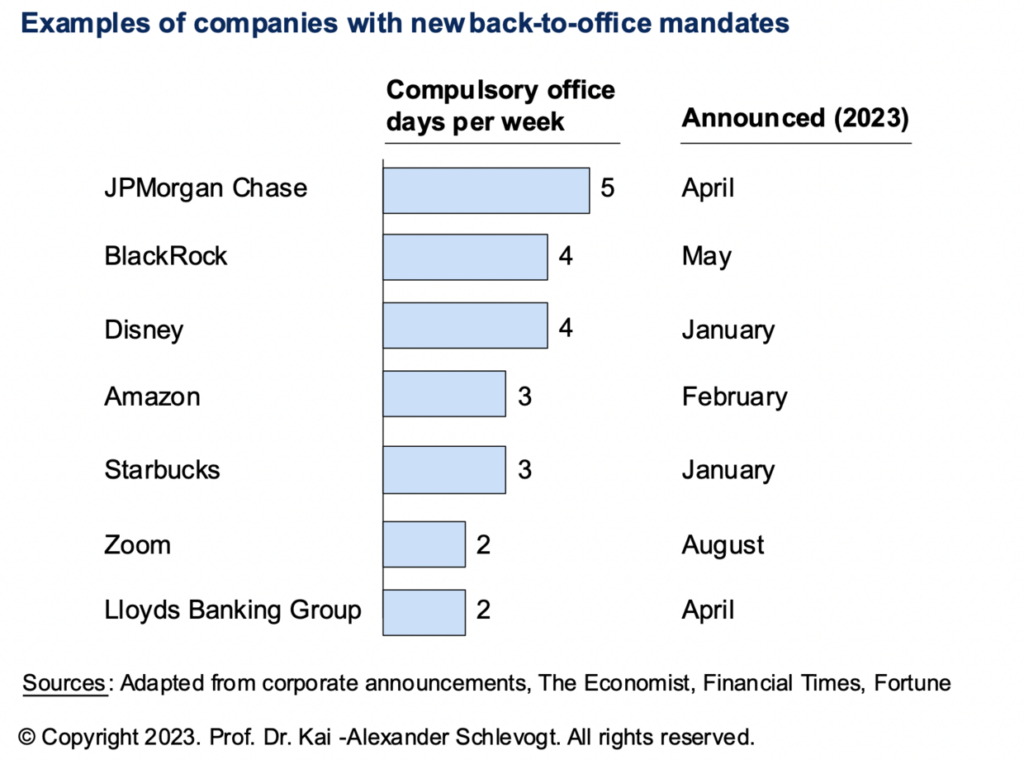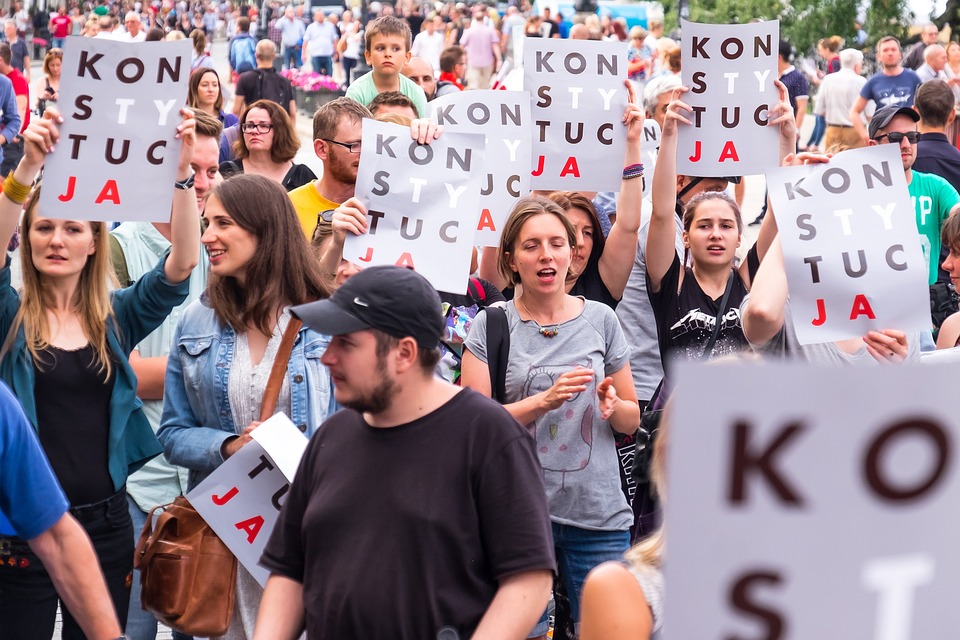After liberal, apparently permanent teleworking arrangements during the pandemic, bosses are increasingly whipping staff back to the office.
The Center for the History of the Russian Diplomatic Service, a Moscow-based museum, proudly guards a mysterious gift that then Secretary of State of the United States Hillary Clinton handed over to her Russian counterpart, Sergey Lavrov, during a meeting in Geneva in 2009: a button to be pressed symbolically to reboot the relationship between the two countries.
However, the gadget carried the Russian imprint peregruzka (перегрузка), meaning “overload,” instead of the deceptively similar word perezagruzka (перезагрузка), which is the correct translation of “reset.” Likewise, recent transformative changes to the post-pandemic workplace around the globe seem to indicate that the much-touted Great Reset of capitalism increasingly is viewed as a burden too heavy to bear for humankind and an idea soon to be shelved in a virtual cabinet of curiosities.
The dream of a Great Reset: Fusion of emerging technologies and humans
In June 2020, only months after the outbreak of the global COVID-19 pandemic, the World Economic Forum (WEF), in cooperation with the Prince of Wales, started the Great Reset Initiative. Its basic idea was to leverage the fluidity of the dramatic global health crisis to push through lasting fundamental changes to capitalism on a world-wide scale and thus avoid a rerun of the Great Depression.
Thinking about the aftermath of the pandemic, Klaus Schwab, the chief executive officer of the WEF, rejected incremental, ad hoc and stop-gap measures. Instead, he envisioned a systemic revolution, encompassing radical transformations in every country, every aspect of society and economy, and every industry.
The seemingly all-inclusive Great Reset Transformation Map (see Figure 1), which features several overlapping categories, shows that the vision also includes one aspect of the future of work, that is, redesigning jobs.

To achieve his lofty aspirations, which he described as “unprecedented,” Schwab promulgated the following three broad priorities of a Great Reset agenda, which partially builds on ideas that he had already suggested prior to the pandemic:
(1) interventions to achieve fairer market outcomes, (2) investments to reach shared goals such as equality and sustainability, and (3) leveraging the “Fourth Industrial Revolution” for the public good, especially in health care and the social sphere.
In a Foreign Affairs article published in 2015, Schwab conceptualized the Fourth Industrial Revolution as a set of radical breakthroughs benefiting humankind, achieved by a convergence of emerging technologies in the physical, digital and biological domains. It follows the preceding three industrial revolutions, which were triggered by mechanical, electrical and digital inventions and innovations respectively.
Initial jump in teleworking consistent with Great Reset agenda
During the pandemic and in its immediate aftermath, the world of work indeed seemed to undergo transformative changes in line with Great Reset aspirations. As regards the design of jobs, with the rise of teleworking – a form of long social distancing – the office lost its traditionally dominant place as the center of work-related activity.
As an example of social contagion (whereby people are just following the crowd), the percentage of working time spent on laboring from home increased from 5% before the COVID-19 pandemic to 60% in the spring of 2020 (Economist 2021). An economics professor at Stanford University, Nicholas Bloom, called the work from home phenomenon “the largest shock to labor markets in decades.”
Work-from-home (WFH) rates declined after the end of the pandemic, but reached an apparent plateau at around 30%, which was significantly higher than the pre-COVID level. At the same time, a “Great Resignation” of disgruntled employees intent on exploring new callings began at the beginning of 2021.
Management gurus were quick to conclude that working patterns had shifted permanently, predicting both the emergence of numerous remote-only firms underpinned by “Zoom culture” in a wide range of industries and permanently lower office occupancy rates.
Apart from the cyclical factor of low employer bargaining power in a tight labor market, the structural-behavioral reasons for such conjectures could include the following:
- Rapid innovations in the teleworking infrastructure, improved teleworking tools in the office and at home and their associated sunk costs, the higher competences of employers and employees in using remote working gadgets,
- the perceived success of teleworking, employees’ alleged preference for WFH (including the avoidance of commuting and, seemingly equally important, the possibility to shirk),
- relocation farther away from the office (with increased commuting times), new habits that are hard to change, and potential fundamental legal changes, such as the right to work from home.
Yet the linear predictions pointing to a new equilibrium of considerably more telework than office work in line with the all-encompassing (and, some would say, dystopian) vision of the Great Reset proved to be wrong.
Great Reset revisited: Office mandates signal backlash
At the end of 2020, some leaders, especially in tech and finance firms, gradually started to politely ask employees to return to physical offices at least on Fridays to avoid a four-day work week with an extended weekend, which had become extremely fashionable. The preferred method of influence was the carrot.
One of the early instigators of the back-to-office movement was the chief executive of the investment bank Goldman Sachs, David Solomon. In 2021, he rejected the idea of a new normal with respect to teleworking, lambasting it as an aberration that he vowed to correct soon. And indeed, by October 2022 he managed to get 65% of his employees back on a five-day work week (compared to 75% before the pandemic).
Over time, executives became more forceful in their demands until an inflection point along the seemingly unstoppable megatrend curve had been reached around the beginning of 2023. Back then, a large cohort of leading multinational companies, including JPMorgan Chase, BlackRock and Disney, issued sweeping back-to-office orders, oftentimes pulling out the stick instead of the carrot (see Figure 2).

In a veritable clampdown on telework and its associated flexibility, chiefs issued strict office mandates, threatening severe punishment in case of non-compliance, and started to tightly monitor office attendance, for example, through the analysis of swipe-based building-entry data.
Perhaps not coincidentally, the back-to-office push coincided with large-scale layoffs at leading postindustrial companies such as Amazon, Meta, and Alphabet.
The chief executive of Tesla, Elon Musk, branded telework as “morally wrong,” confronting employees with the choice of laboring at least 40 hours per week in the office or looking for another job.
Citigroup employees not complying with new office mandates were threatened with significant consequences. A Google spokesman stated that the technology giant might reduce the pay of employees working from home. Lloyds announced it would control office attendance by electronic means.
According to a comprehensive Goldman Sachs study, by May 2023, the share of US workers at least partially engaging in telework from home, while being still significantly higher than the average pre-COVID figure of 2.6%, had approximately halved to 20-25% from the peak rate of 47% at the climax of the global health crisis.
According to this research, which predicted a further decrease in work from home rates, office utilization rates, unexpectedly, had not declined significantly, partly due to companies being locked into long leases. According to Stanford economics professor Nick Bloom, only roughly 15% of workers in the US are toiling exclusively from home.
A symbolic milestone along the back-to-office megatrend line was a high-profile decision by Zoom, the provider of videoconferencing tools and thus one of the pivotal enablers of telework. In August 2023, it decreed that employees must work at least two days per week in the office.
This dramatic shift initiated by the industry trailblazer could be compared to the imagined scenario of Mercedes-Benz asking its employees to come to work on bicycles instead of using its famed limousines.
Moreover, Zoom’s U-turn, which in essence constitutes a denial of its own products, is reminiscent of Steve Jobs not allowing his children to use the iPad, since he deemed it “too dangerous” for them.
Given the enormity of the unexpected reversal, we need to ask: What are the fundamental reasons for the massive, centripetal back-to-office shift?






















































